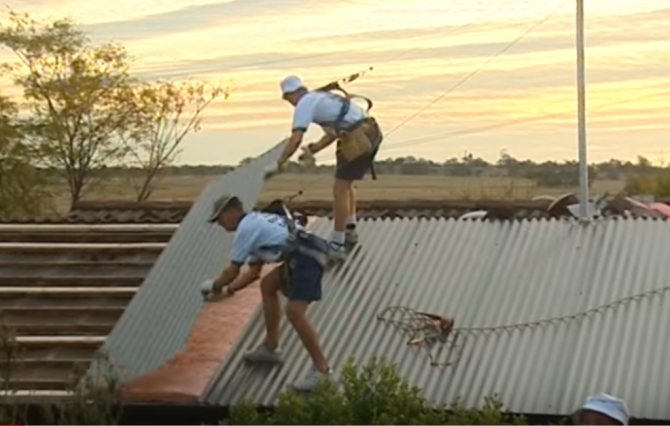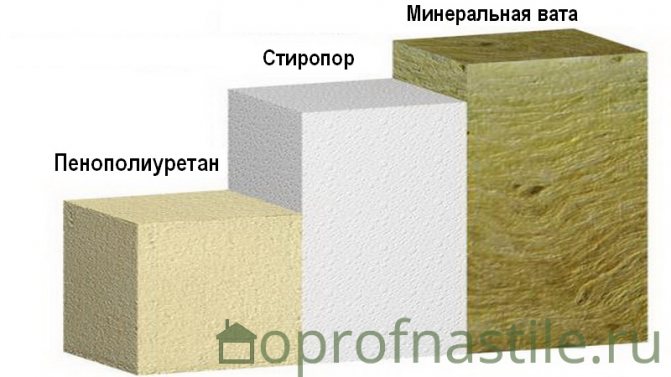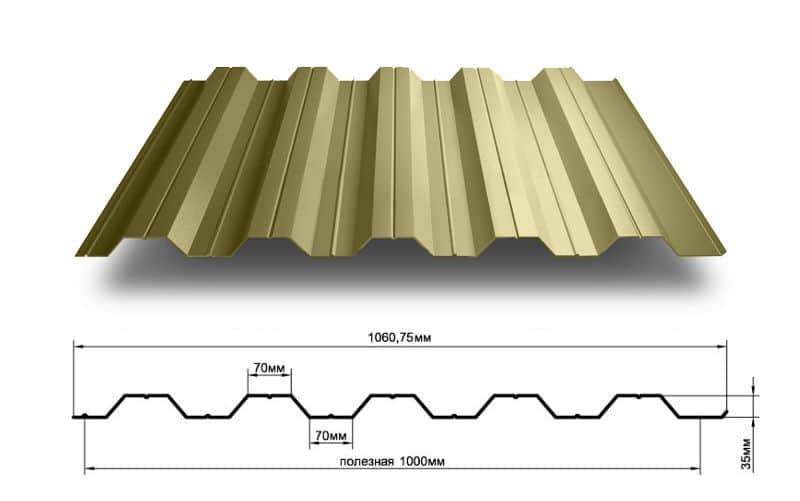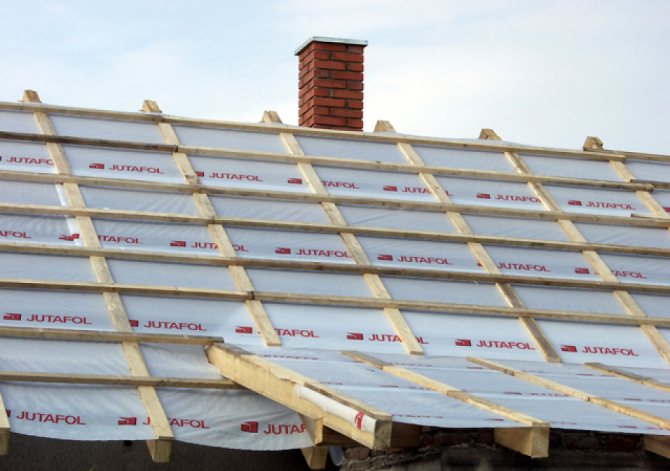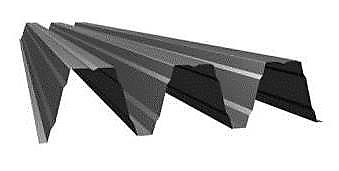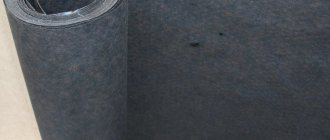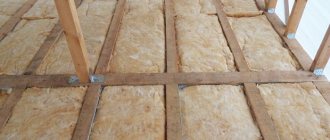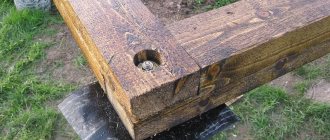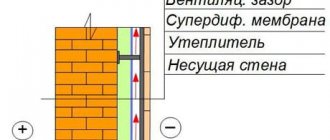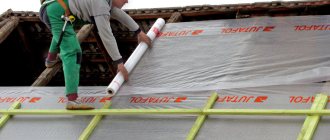The need for roof insulation
Hardly anyone will insulate the attic roof. The cold attic in private houses of old traditional construction serves as a storage place for items that have served their time.
A person who, with the help of an attic, is going to significantly increase the volume of a residential location, can build a difficult insulated roofing unit. That is, he creates additional living space under the roof of his house.
Its device will require a different technological content. The traditional roof unit has been thoroughly modernized, introduced into its structure new elements necessary for the construction and long-term functioning of the insulation layer.
The modern attic usually serves as the main sleeping area for family members. The room is equipped with all types of plumbing and sewerage systems:
- showers;
- toilets;
- natural and forced air ventilation;
- electricity.
All this requires a certain positive temperature for its normal functioning.
An insulated roof covered with corrugated board, metal tiles, painted reeds and other roofing materials can create a favorable operating mode.
What heat-insulating materials are needed to insulate a roof from corrugated board
Private housing construction has received an exclusive direction for the manufacture of insulated mansard roofs. From the various methods of constructing a warm roof covering, the best option has been singled out, which has become the dominant element today.
Integrated into the warm layer:
- lining or dry plaster;
- a thin layer of vapor barrier is placed on the inner finishing material;
- the inter-rafter space is filled with insulation;
- then they are totally covered with a hydro-barrier (roofing material, a special synthetic film);
- they are sewn on top with a crate with a step of 1-4 cm. To organize the ventilation space, a counter-lattice is installed with a step of 40-50 centimeters.
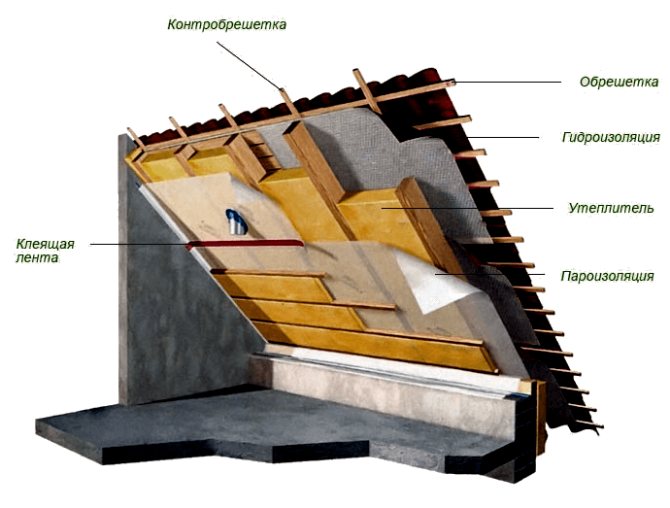
Roof insulation
Profiled sheeting is attached to the crate. With a step of 35 centimeters, there is a guarantee that the wind will not "lift" the profiled sheets.
Important
- Use environmentally friendly heat-insulating materials.
- With a low coefficient of thermal conductivity.
- No unpleasant odors
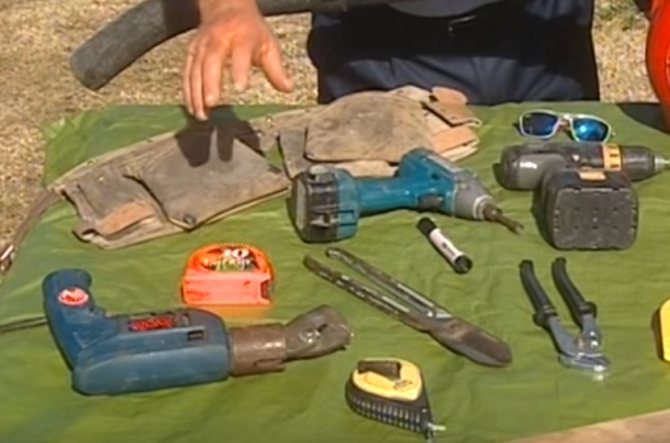

What to cook before starting work
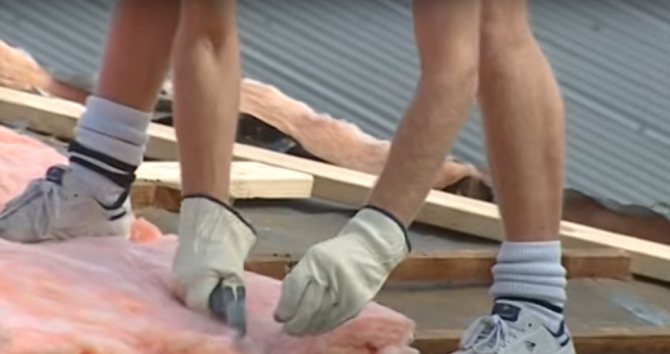

Insulation laying works
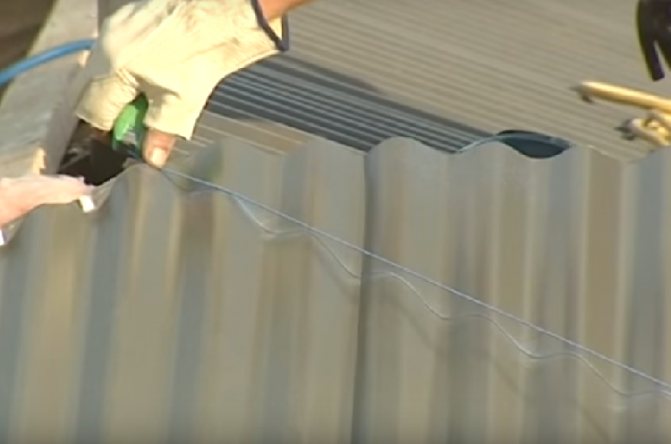

Classics of the genre - marking the profiled sheet with twine and chalk


Electric shears - for high productivity
Nuances of warming of pitched roofs with corrugated board cover
Private developers are paying more and more attention to the professional sheet. It's cheap, easy to install and looks pretty good. At least better than asbestos slate. Living in your own home, it becomes necessary to create additional living space. Agree, it would be nice if a one-story house turned into a two-story one. Such an opportunity is provided by the attic roof, but now it is not about it.


In most cases, thermal insulation is laid at the stage of erecting the roof itself, but if for some reason you decide to postpone this work, then it can be completed later. It is worth noting that it is somewhat more difficult to make internal thermal insulation, because you have to work indoors and with your hands constantly raised.
It is these small nuances that make this process more expensive. Of course, you can save on installation costs by doing everything yourself.
The main enemy of flat roofs, as well as pitched ones, is condensation.He is able to destroy the rafter elements in a very short time, causing them to rot. Therefore, roofs with metal coverings are necessarily equipped with natural ventilation, and if this is not possible, then aerators or deflectors are installed. In addition to the negative impact on wood, high humidity also affects the heat-insulating material, increasing its thermal conductivity.
On pitched roofs, they are often installed ventilated skates
... They create an additional outlet for air, which leads to less condensation in the attic. The only thing that distinguishes a ventilated ridge from an ordinary ridge is that there is perforation on the first ridge. It is through these holes that humidified air leaves the room.
Roofs, which are characterized by condensate accumulation, are best equipped with a hydrophobic insulation. So you can rest assured about the integrity of this material. But oddly enough, almost everyone wants to save money and, as a result, buys not quite the right products. Most developers use basalt slabs. They are cheap, easy to install, but have a significant drawback. If they get wet during operation, then their positive properties, such as low thermal conductivity, will come to an end.
Long-lasting construction can be achieved by using quality materials, so if you want this, then pay attention to expanded polystyrene as a thermal insulation product. It has the same advantages as basalt fiber, but is not afraid of water. But why then does not everyone acquire this material when its qualities are better? The fact is that many people listen to their acquaintances, neighbors, friends and cannot purchase products on their own. Naturally, it does not do without its drawbacks. Expanded polystyrene is very flammable, which does not allow it to be laid on most buildings, in addition to this, the fragility of the material makes many change their minds.


Regardless of which insulation material you choose, you still have to lay the insulation layers. One of them must protect the material from atmospheric precipitation, and the other from the steam that comes from the living quarters. If you are wondering where it comes from, then now I will explain everything to you. The human body is designed in such a way that when it overheats, sweat is released. It helps to cool the body, and as this procedure is carried out, moisture from the skin dissolves in the air. In addition to sweat, processes such as breathing, cooking and much more affect air humidification.
As a rule, the profiled sheet is laid on a discharged crate and a lining carpet can be sent over it as additional insulation. It contributes to the leveling of the created plane from the lumber, and the increased density perfectly resists moisture.
If you have good finances, then the lining can be laid over the entire roof, otherwise, it is arranged only near the overhangs and important nodes, where it will drain the water.
On the roofs of private houses, you can often find seals for corrugated board. They represent a narrow foam rubber strip, which is arranged along the eaves overhang of the roof. Such strips have holes, thanks to which fresh air can easily enter the attic and remove condensation. The corrugated roof seal is an excellent solution for insulating the roof from small rodents and birds.
Basic requirements for materials when installing a warm roof from corrugated board
When insulating the roof, materials with the following characteristics should be used that have acceptable performance:
- thermal conductivity;
- by hygroscopicity;
- vapor permeability;
- by elasticity;
- compressive strength;
- by elasticity.
A warm roof device needs high-quality materials. It refers to
- vapor barrier
- hydrobarrier
- insulation
- corrugated board.
A warm roof includes auxiliary materials: for steam removal, waterproofing devices.
Today, in construction trade enterprises, the developer will be offered a wide range of goods, both domestic and imported. Usually these are polyethylene films with the required performance characteristics. Inexpensive but functional.


Steam-hydro-windproof materials
Many people still use roofing material as a hydrobarrier. Cardboard impregnated with bitumen cannot be a suitable location for harmful bacteria, fungal colonies that can turn wooden units and elements of the roofing system into dust.
As for the insulation, they use all kinds of materials of organic and chemical origin:
- mineral wool
- stone wool
- bulk materials to be packed
- penoplex
- Styrofoam
- others
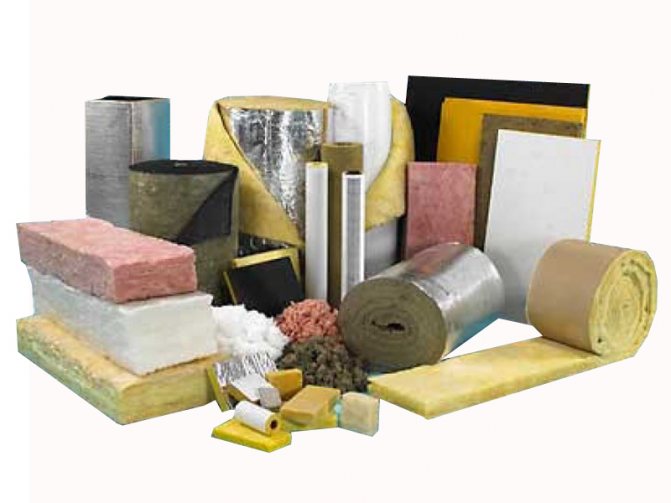

Heat insulating materials
Why do waterproofing?
The caring owner of the house must perform waterproofing of the roof under the corrugated board. Here is an example: corrugated board will not be able to 100% exclude the ingress of moisture into the under-roof space of the building. Why? Yes, because abundant rainwater, a large mass of snow in a strong wind will still penetrate into the under-roof space. And no matter how hard a person tries, it will still happen. A corrosive process will begin.


Wear of roof fasteners and modules
Gradually, the sheets of corrugated board on the roof are subject to deformation from temperature. Therefore, the coating begins to pass moisture through itself. This is noted at the joints on the roof modules. In practice, there are other cases. The passage of moisture appears in the places where the corrugated board is fixed to the rafters. This is because after the time has elapsed, tightening the screws gives slack.
Washers can break completely. Water getting under the roof is fraught with the fact that the rafters begin to rot. And then they collapse completely. And along with them, the frame on the roof collapses.
Experts say: if the installation is done correctly, then unexpected moments will not appear. After all, a high-quality coating can protect the structure from any moisture. It seems that there is no need to do waterproofing. In theory, this is correct. But, moisture appears. It can be simple precipitation or condensation. It can form on the roof from the inside. This is due to the different temperatures inside the building and outside it. What will happen if slanting rain passes, snow with storm winds - moisture will appear.
The likelihood of condensation manifestations will be even higher if engineering networks pass through the attic space. Their entrances to the space were not sealed. This can be a pipeline for hot water, heating, ventilation ducts, chimneys from fireplaces. After all, the media that circulate through pipelines have different temperatures. Sometimes increased.
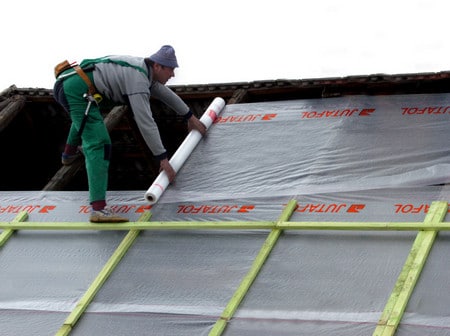

This temperature difference warms up the air here. Which contributes to the formation of condensation. But the main condition for the roof is the lack of moisture resistance, strength, resistance to temperature. Condensation can be discharged using the provided gaps. In order for these gaps to be, it is necessary to lay out the waterproofing in the required form. This is what will make it possible in the future to exclude the occurrence of flaws.
Conclusion: installation from corrugated board is performed with an overlap. The most difficult thing is to waterproof the pipe joint. Chimney waterproofing is an important, responsible job. Water penetration through the joint between the chimney on the roof and the corrugated board leads to disaster. It is the pipes on the roof made of corrugated board that must be equipped most carefully.
Material selection
It is necessary to do waterproofing. Let it be a budget and short-lived waterproofing option. For example, polyethylene film. But there are even better materials, you can choose them. The selection can be carried out in their direction. When choosing a material, one must be guided by high strength properties. These qualities are possessed by polyethylene types of membranes, they are reinforced. Is there some more:
- polypropylene films;
- anti-condensation membranes. They contain a layer of viscose-cellulose non-woven material. The layer absorbs excess moisture.
Also, for non-insulated metal roofs made of corrugated board, a waterproofing membrane with the name Ondutis RV is suitable. Waterproofing is the key to the durability of a building, not only a private one, but any building. The main thing is to choose the material correctly. The advantage of waterproofing is practicality, wear resistance. The selected material meets these indicators. Together with waterproofing, the corrugated board will provide the roof with the necessary protection.
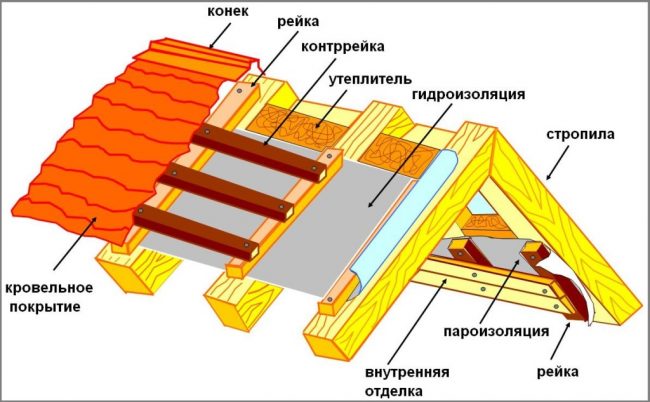

Waterproofing under the corrugated board is equipped on top of a layer of thermal insulation. An operation is performed before working with a covering - corrugated board. Membrane films are used for waterproofing. They are resistant to temperature extremes, the radiation of the sun's rays, the negative effects of the environment, and weather conditions. If the owner does not waterproof the corrugated board, he condemns the roof to death. After all, the term of use of such a structure is almost two times less than that of a roof with protection.
Decking with insulation on pitched roofs
Private housing is rarely flat roofs. Most of the objects are with pitched types. And here it is necessary to strictly observe the measure.
A pitched roof with an optimal slope of 20% will be effective.
From below, fixed on the counter-lattice of the corrugated board, there is waterproofing, in the falling direction - insulation, then vapor barrier and internal finishing lining.
The entire layer is necessary not only for retaining heat in the attic. It dampens street noise.
If it were not for this layer, then it would be impossible to sit in the attic during a summer shower.
What is a roofing cake and why is it needed?
The shape and size of any roof is determined by its supporting system, which consists of rafter beams. And the appearance and performance are provided by structural elements and coatings that are attached over the rafter frame.
It is these layers, starting with insulation of various types and ending with finishing (in this case, it is corrugated board), and it is customary to call the roofing pie.
What functions does it perform?
- Ensuring ventilation of the frame and fixing the finish coating - the layers of the lathing and counter-lathing are responsible for this inside the "pie";
- Vapor barrier;
- Keeping warm indoors;
- Protection against precipitation, atmospheric moisture and internal condensation.
This list can be expanded if we take into account the fact that enclosing structures, anti-icing systems, gutters and decorative elements, even interior decoration, are also part of the roofing pie.
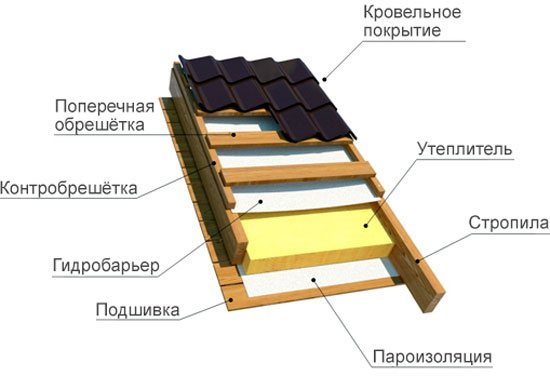

At the same time, the “recipe” of the pie can differ significantly, depending on the shape of the roof or the planned decorative coating, as well as the intended mode of use of the attic space. For example, a flat roof will not need snow-retaining elements, and by equipping a cold attic, you can do without heat and vapor barrier.
Installation of a roofing cake is a responsible task. You should pay attention to each of its stages, realizing that an error in the arrangement of any of the components will entail problems with the operation of the roof as a whole.
Roofing device. Roofing cake
Reference! It has been calculated by builders and heating engineers that 20 percent of the heat from the house goes through the roof.
It turns out that people use valuable fuel, especially natural gas, to heat the air basin. Helping industry create a greenhouse effect. The heat is escaped through the objects that the attics have. They are not insulated, they are used ineffectively.
People began to think and today it is clear that an active offensive is underway on the irrational waste of home heat. With success. A significant amount of thermal energy can be conserved in attic houses. It is due to the roofing cake made of various materials. To confirm these words, consider what it consists of:
- A roofing cake is formed from several dissimilar materials with different technological characteristics.
- The most important layer is corrugated board, which creates conditions for the formation of the best performance characteristics of the roofing cake. It does not allow it to get wet during rain, snow, melt water and so on.
- To help him is a hydro-barrier - a kind of gasket between a warm cake and metal profile sheets.
- Further, the insulation is located in the roofing system. Its task is not to let thermal energy into the atmosphere and not to allow cold air to penetrate into the attic.
- The last layers, vapor barrier, regulate the removal of vapors from the attic room. Even lower is the finishing material, which creates a creative interior in the attic.
We are convinced that each element of the roofing cake performs its own profile function. And the more rationally the layers are selected, the better the roofing cake will work.
The device of a warm roof from corrugated board on flat roofs
The technology of installing a warm roof on flat roofs has not gone far. It existed before, but with the advent of innovative materials, it did not become worse, but better.
Profiled sheeting is used in large volumes in the construction of flat roofs for offices, private houses, buildings of small and medium-sized enterprises, warehouses.
Flat roofs are:
- traditional;
- inversion.
Their structure includes bases that are subjected to power loads. It can be
- reinforced concrete floor slabs
- corrugated board
- or another basis.
If there is a reinforced concrete floor, then first a small thickness cement screed is made, a heater is put on top, then a waterproofing layer. The topcoat is roofing felt poured with heated bitumen mastic.
This is the traditional method with a limited number of layers. If there is no lump insulation, then a layer of expanded clay is used.
In recent years, they began to be used as a material, a vapor layer.
They began to integrate into a warm pie
- glass cloth
- geotextile
- other materials.
Moreover, bulk insulation began to be used as a material that forms the slopes of the roof.
In the middle, make the layer thicker, reducing it towards the cornices.
Inversion structures are arranged on ready-made roofs. Gardens and terraces are arranged on them.


Warm flat roof cake
The choice of insulation
The process for working with different views is different. Therefore, before starting work, it is necessary to take into account all the nuances and opt for one of the heaters existing on the market. For example, expanded polystyrene sheets are mounted easier than all other options. They are placed tightly between the rafters or glued directly to the ceilings. The principle of operation is simple and does not require additional instructions.
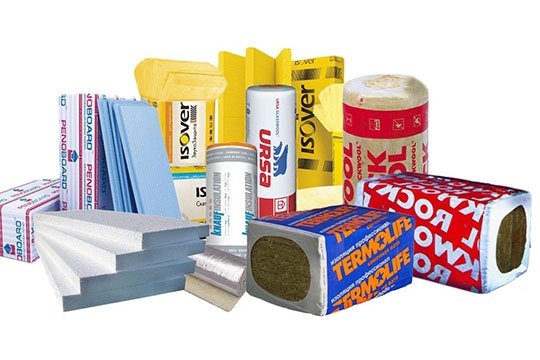

Insulation polyurethane foam is sprayed onto the surface with special equipment, all the work is performed by third-party specialists. The participation of the owner of the house in the process of insulation is minimal.
Mineral wool
It is somewhat more difficult to work with mineral wool. At the same time, this is one of the most effective way to insulate a roof from corrugated board. Installation takes a little longer than the previous views. Additionally, you will have to buy a hydro and vapor barrier membrane.These elements are an integral part of working with mineral wool.


Since the material is porous, it easily absorbs moisture and condensation. With prolonged exposure, the processes of decay and mold formation begin. To prevent these processes, layers of hydro and vapor barrier are used. The lower layer of the membrane does not allow condensation from the interior, the upper layer prevents moisture from condensation from the inside of the profiled sheet.
If you step by step disassemble the stages and technology of work, then it is not difficult to carry out insulation with this material. The order of the layers must be carefully observed. If we consider the roofing insulation "pie", starting from the corrugated board, then it looks like this:
- waterproofing (as a rule, it is a waterproofing membrane);
- a layer of insulation, in this case, mineral wool;
- a layer of a vapor barrier membrane;
- interior decoration (this layer is optional and is done as needed).

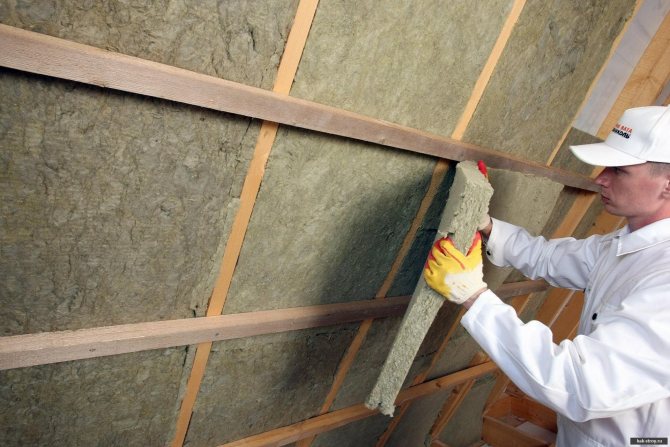
The next step is to choose the shape of the insulation. Mineral wool is presented on the construction market in two forms: in a roll and in sheets.
All parts are adjusted to the distance between the rafters. The most convenient way to work is to use a painting knife. Fastening is carried out with a nylon thread, as well as with 50mm * 50mm rails for additional, cross-insulation. Necessarily a spur between the rafters, while filling all the voids and cracks. It is not recommended to compress mineral wool, therefore, the marking and preparation of sheets must be carried out as large as possible. A layer of vapor barrier membrane is fixed on top and closed, if necessary, with a finishing, decorative coating.
Options for insulating a flat roof outside and inside
The versatility of the insulation of such roofs is obvious. But they have one drawback. There is no rafter system. That is, the sinuses between the rafters. There are many options for insulating both outside and below. Choose the best insulation and hang it, for example, to a concrete floor using plastic dowels. After that, the insulation is covered with a special cement mortar, painted or whitewashed.
Task number one: It is good to arrange the junction of the water removal, steam outlet. Work on the waterproofing device
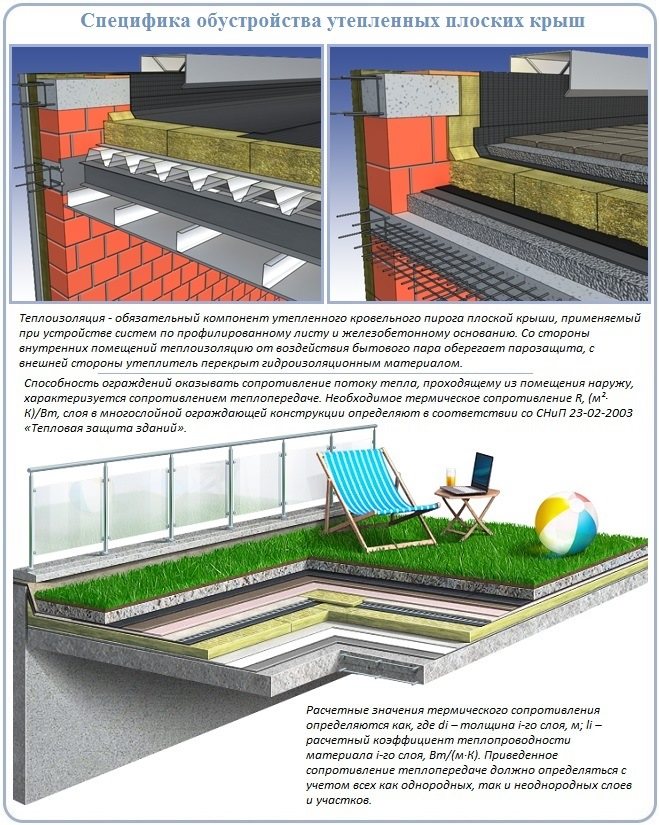

Insulation of a flat roof
Insulation of the garage from corrugated board
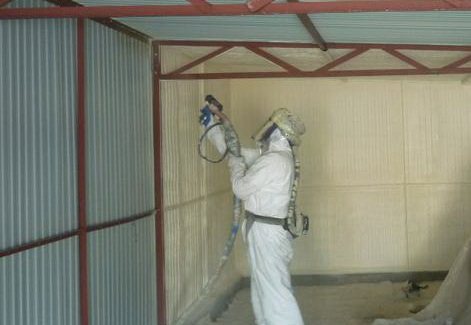

As you know, the overwhelming majority of car owners use the garage throughout the year. The garage in which the car is kept both in summer and in winter must be well insulated. Of course, it is best if the air temperature in the garage during the winter season is between one and five degrees below zero. The issue of warming the garage space needs to be resolved even at the stage of its construction, although the thermal insulation of the garage, even if the old building is not so problematic.
Before starting the process of insulating a garage from corrugated board, it is necessary to choose the best material for the thermal insulation device. The following insulation materials are most commonly used:
- Mineral fiber based;
- Expanded polystyrene plates;
- Liquid polyurethane foam.
How can you insulate a garage with your own hands?
It is necessary to insulate garage walls from corrugated board inside the garage itself. For this, it is recommended to use sheet insulation.
The following work should be done:
- First, it is necessary to attach a thermal insulating film to the walls of the garage. It will not allow accumulated heat to leave the garage, and it will also prevent condensation from forming.
- Then sheets of polystyrene or isoplex must be glued with special glue to the profile itself, and the joints must be foamed using polyurethane foam.
In the same way, you need to insulate the garage door. Because they can become conductors of cold and moisture. But in order to mount the roll insulation, it is recommended to first build a frame from rails.Insulation of the garage roof is best done after the frame is ready, but the profile has not yet been laid on the roof itself.
How to make insulation with polyurethane foam
This is a high-tech technology for insulating any structures of private houses. To create a consistency, equipment has been created and is being sold with the help of which both vertical and horizontal structures can be insulated.
The blowing or pouring method is used. It is more productive to use the spraying method, which occurs:
- filling all gaps of any size;
- expanding in volume, creates a solid, durable coating.
Polyurethane foam is obtained by mixing a polyol and a polysationate, which are in a liquid state. Mixing takes place without oxygen access during spraying. Apply consistency to structural elements with a pistol. Cooling down, the material increases in volume several times.
Important! Polyurethane foam is a versatile insulation. Used for insulation of walls, ceilings, floors, roofs
Characteristics and price of the bearing profiled sheet
| The production of a profiled sheet with bearing properties is made of galvanized metal (simple galvanizing) and with a polymer coating (non-ferrous). Today, metal rolling plants produce galvanized products from various raw materials, mainly Russian production. Galvanized load-bearing corrugated board for floors is traditionally used for pre-fabricated relatively inexpensive structures and for the construction of hangars, warehouses, industrial buildings. The polymer-coated load-bearing profiled sheet can be produced in any color scheme and is a good solution for use as a roofing and facade material for exterior decoration of large industrial facilities. The quality of the profiled sheet and its price depends on the thickness of the metal, the height of the profile and the presence of a colored polymer coating (simple galvanizing is cheaper than polymer). The thicker the metal and the higher the profile, the more expensive the final product. |
| Bearing corrugated board | Price | Terms of service |
| Galvanized bearing profiled sheet | Price from 225 rubles per m2 | from 3 to 10 years |
| Polymer coated bearing profiled sheet | Price from 280 rubles per m2 | from 10 to 30 years old |


